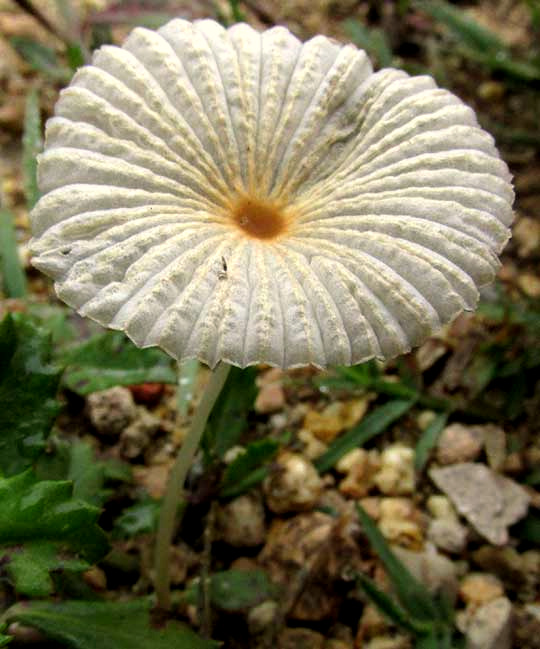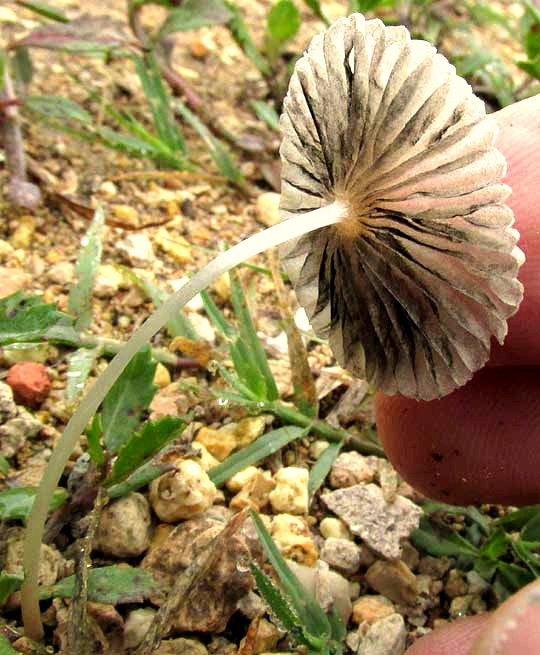Excerpts from Jim Conrad's
Naturalist Newsletter
from the September 21, 2014 Newsletter issued from the Frio Canyon Nature Education Center in the valley of the Dry Frio River in northern Uvalde County, southwestern Texas, on the southern border of the Edwards Plateau; elevation ~1750m (~5750 ft); N29.62°, W99.86°; USA
PARASOL MUSHROOM
The day after our Snowy Inkcap appeared on the cow dung, a very similar inky cap appeared early in the morning, this time growing directly from hard-packed, gravely ground next to the road. That's it below:

Gingerly tilting the cap with my fingertip, the gills underneath showed themselves already beginning to melt into black goo, as seen below:

As with the Snowy Inkcap, this is obviously an inky cap, thus identifying it has to be considered an iffy business, However, with that golden "eye" in its cap's center and the neat way its papery cap is ruffled with all those little "pleats" radiating from the eye, it's so distinctive that I'm going to name it, because it looks just like a similar sized species that grows from the ground and is commonly found in our area, and that's the Parasol Mushroom, PARASOLA PLICATILIS.
And I'm sticking to this name despite the warning given by Michael Kuo at MushroomExpert.Com that "A gazillion little coprinoid mushrooms look like Parasola plicatilis on casual inspection, so a microscope is needed for successful identification of this widely distributed and common species."
But, really, if we're going to split taxa into such tiny segregates that no one uses those names but the experts, what's the point in regular people having the names of things, and without those names how are we going to discover what's good and beautiful about the organisms?
Anyway, Parasol Mushrooms are known to be saprobic, which means that they derive nourishment from nonliving or decaying organic matter. They grow alone or scattered in grassy areas, usually in direct sunlight, exactly as ours was doing, in summer and fall, and sometimes even in the winter in warmer areas. The species is widely distributed in North America and Europe.
And one other nice thing about the Parasol Mushroom is that it's just so unexpectedly dainty and elegant looking when you stumble across it at the gravely side of a road early in the morning with dew still on the grass that you just feel good seeing it, and being part of its world.